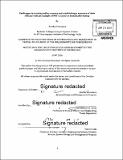| dc.contributor.advisor | Michael W. Golay. | en_US |
| dc.contributor.author | Srivastava, Amrita, S.M. Massachusetts Institute of Technology | en_US |
| dc.contributor.other | Massachusetts Institute of Technology. Engineering Systems Division. | en_US |
| dc.date.accessioned | 2017-01-06T16:14:36Z | |
| dc.date.available | 2017-01-06T16:14:36Z | |
| dc.date.copyright | 2016 | en_US |
| dc.date.issued | 2016 | en_US |
| dc.identifier.uri | http://hdl.handle.net/1721.1/106268 | |
| dc.description | Thesis: S.M. in Engineering and Management, Massachusetts Institute of Technology, School of Engineering, System Design and Management Program, Engineering and Management Program, 2016. | en_US |
| dc.description | Cataloged from PDF version of thesis. | en_US |
| dc.description | Includes bibliographical references (pages 99-101). | en_US |
| dc.description.abstract | Online education is changing traditional models of learning both in schools and the outside world. The developments of learning pedagogies and technology have also contributed to the adoption of online education. Some benefits of online education include the immense variety of content, lower costs, higher flexibility, increased interaction, and easy access. This is substantiated by the steady rise in student enrollment and the use of either Massive Open Online Courses (MOOCs) or Blended Courses in institutions. However there is a growing sense of skepticism for MOOCs owing to low retention, and less control over the learning process and educators prefer the adoption of a blended model for their courses. The report details the research conducted leading to the selection of a blended learning approach for MIT's course in "Sustainable Energy" (1.818/2.65/10.391/11.371/22.811/ESD.166). The report outlines a design blueprint to create an online course. Some of the components of design are identifying the key tenets of learning that improve knowledge and skill, suitable learning pedagogies to transform the content for an online course, understanding the system behaviors, and our experimentation with the edX Platform. This end goal of this report is to create a template to help instructors and designers in creating an online course on the edX platform. | en_US |
| dc.description.statementofresponsibility | by Amrita Srivastava. | en_US |
| dc.format.extent | 101 pages | en_US |
| dc.language.iso | eng | en_US |
| dc.publisher | Massachusetts Institute of Technology | en_US |
| dc.rights | M.I.T. theses are protected by copyright. They may be viewed from this source for any purpose, but reproduction or distribution in any format is prohibited without written permission. See provided URL for inquiries about permission. | en_US |
| dc.rights.uri | http://dspace.mit.edu/handle/1721.1/7582 | en_US |
| dc.subject | Engineering and Management Program. | en_US |
| dc.subject | System Design and Management Program. | en_US |
| dc.subject | Engineering Systems Division. | en_US |
| dc.title | Challenges in creating online courses and establishing a measure of their efficacy with an example of MIT's course in Sustainable Energy | en_US |
| dc.type | Thesis | en_US |
| dc.description.degree | S.M. in Engineering and Management | en_US |
| dc.contributor.department | Massachusetts Institute of Technology. Engineering and Management Program | en_US |
| dc.contributor.department | System Design and Management Program. | en_US |
| dc.identifier.oclc | 962186929 | en_US |

